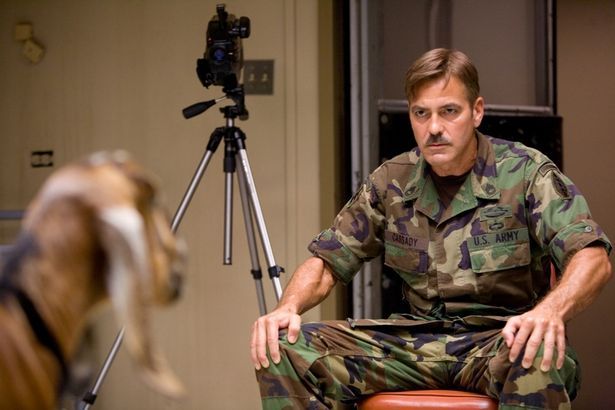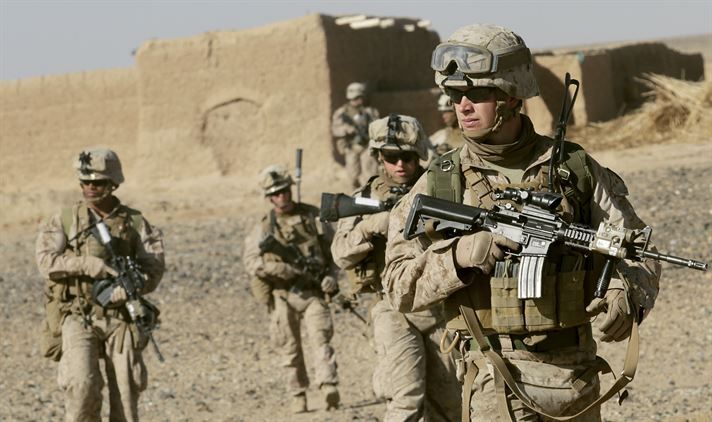Scottish ‘X-Files’ Kept Secret for Years by CIA Are Released
Article by Andy Shipley July 17, 2020 (dailyrecord.co.uk)
• Declassified CIA documents have revealed “the global scope of CIA activities and the evolution of its interests… from assessments of the Soviet economy, to public perception of the Vietnam War abroad, to perceived communist influence in Latin America, to the rise of the terrorist threat, and more eccentric issues like UFOs and psychists,” said an expert in intelligence and international security at the University of Glasgow, Damien Van Puyvelde. “All of these can be linked to the broader context of the Cold War.”
• In particular, the documents show the extent that the American CIA (Central Intelligence Agency) have kept tabs on Scotland. Some of the weirdest records relate to the controversial Stargate program, which is credited for influencing the 2009 movie: The Men Who Stare at Goats, starring George Clooney and Ewan McGregor, in which US special forces attempt to harness paranormal powers as a weapon – by trying to explode the hearts of animals just by looking at them.
• A 1964 report by the National Investigations Committee on Aerial Phenomena (NICAP) research group lists UFO sightings across the globe and includes a mysterious case in Wigtownshire on April 4, 1957 when three Scottish radar posts tracked a UFO that “dove and circled” at between 60,000 and 14,000ft. Wing Commander and eyewitness, W P Whitworth, is quoted as saying, “Quite definitely this was no freak. It was an object of some substance and no mistake could have been made.” The report’s recommendations include boosting attempts to communicate with extraterrestrials and even drafting ‘space law’ to govern how humans interact with ET. “On the basis of the evidence in this report, NICAP has concluded that UFOs are real and that they appear to be intelligently controlled. We believe that it is a reasonable hypothesis that UFOs… are manifestations of extraterrestrial life.”
• In the 1980s, the CIA took an interest in the work of leading Edinburgh University parapsychologist Deborah Delanoy. With a hidden camera, Delanoy exposed a 17-year-old self-proclaimed metal-bender named Tim as a fake. A report reveals that “Tim confessed to deceptive behavior. He said that he was a practicing magician who had wished to see if it were possible for a magician to pose successfully as a psychic in a laboratory.” According to Van Puyvelde, the CIA took an interest in the Scottish spoon-bending teen after rumors that the Soviet Union was interested in psychics in the 1970s. “The CIA’s own conclusion by the mid-1990s was that the entire program was not useful to its operations.”
• On December 21, 1988, Pan Am Flight 103 was brought down over the Scottish village of Lockerbie. By 1990, the investigation was still ongoing and it would be another year until two Libyans were indicted. According to CIA notes, on June 7, 1990, a psychic was tasked with describing a photo of the reconstructed baggage carrier which held the plane’s bomb. In 22 pages of scrawled notes and sketches, the psychic revealed: “There is a bomb in the box and it explodes. It makes me think of a bomb blowing up a person. I can see red, fire and jagged flames. Something about the target makes my eyes burn.”
• Another pair of ‘secret’ reports from August 1951, shows how meticulously US intelligence monitored the industrial output within the Soviet bloc to detect any military or technological use. The reports focused on the production of screws and bolts in what was then Czechoslovakia. An order from 1950 was made for ‘one tonne of two-pointed rivets imported to Prague from Dieck’s Ltd in Glasgow’. The CIA found it suspicious that “There is a complete lack of all sizes of winged screws. There are none at all in stock”. An evaluation of the material was ordered.
• A memo marked ‘confidential’ from August 6, 1964 – the day after a report was made to Congress on the notorious (and later debunked) Gulf of Tonkin incident which led to the US escalation of the Vietnam War – examined Scotland’s reaction to US retaliatory airstrikes in North Vietnam. The memo said that the escalating crisis in South East Asia was front page news in the UK – with most media backing US action. “The only anti-American incident reported was in Glasgow where demonstrators daubed slogans outside the US consulate.”
• A terrorism review from 1983 delves into a rise in letter bombs in the UK by groups such as the Scottish National Liberation Army. The report was deemed so sensitive, it was only released in 2010 in a “sanitized” form. The review identifies targets of letter bombs sent in 1982 to include government offices in both Edinburgh and Glasgow, unnamed political party headquarters, and the offices of the British Industry Secretary and the Prime Minister in London. They conclude: “In the attacks to date, the letter bombs have contained only small amounts of explosives, probably to avoid personal injury and to preclude discovery by security measures.”
• Another ‘secret intelligence report’ from 1984 tackles European, including Scots, support for communist regimes in Central America. With the Soviet Bloc’s “massive propaganda and disinformation” campaign, the leftist guerillas appeared to be winning the propaganda war in the west. Insurgents were coordinating their international ‘peace movement’ activities through Mexico City. “There is no way a small Central American country or even Cuba could mount a worldwide propaganda campaign of this kind,” said the report.
• Other CIA documents include an analysis of Social Democrat Roy Jenkins’ ‘Glasgow by-election’ victory in 1982, overturning a Tory majority; a ‘terrorist’ attack on the US consulate in Edinburgh with three “gasoline” bombs hurled against the building; and Pakistan’s move into a Scottish and Indian dominated jute fiber production industry.
• Van Puyvelde notes that, “Overall, it is quite remarkable that the CIA is making all of this material available online. By comparison, the (British) Secret Intelligence Service (MI6) does not make its records available at The National Archives or its website. This is a missed opportunity to improve public understanding of intelligence.”

Incredible evidence has emerged of the extent that American CIA agents have kept tabs on Scotland.
Declassified documents range from paranormal research to political intrigue – lifting the lid on the Scots ‘X-files’.
Dusty files locked away include UFO sightings, psychic powers and Cold War espionage over decades of spy games.

Some of the weirdest records relate to the controversial Stargate programme which has long fascinated conspiracy theorists.
The shadowy work was widely credited for influencing the 2009 movie The Men Who Stare at Goats – starring George Clooney and Ewan McGregor.
In the film, US special forces attempt to harness paranormal powers as a weapon – by trying to explode the hearts of animals just by looking at them.

Lecturer in intelligence and international security at the University of Glasgow Damien Van Puyvelde said: “The references reflect the global scope of CIA activities and the evolution of its interests.
“From assessments of the Soviet economy, to public perception of the Vietnam War abroad, to perceived communist influence in Latin America, to the rise of the terrorist threat, and more eccentric issues like UFOs and psychists.
“All of these can be linked to the broader context of the Cold War.”
Buried in the historical files is a 1964 report by the National Investigations Committee on Aerial Phenomena research group – which included retired armed services chiefs.
Kept in closed CIA files for nearly 40 years, the 186-page document lists UFO sightings across the globe and includes a mysterious case in Wigtownshire on April 4, 1957.
It tells how three radar posts tracked a UFO which “dove and circled” at between 60,000 and 14,000ft.
The close encounter was described by Wing Commander W P Whitworth, based in Scotland, as: “Quite definitely this was no freak.
“It was an object of some substance and no mistake could have been made.”
FAIR USE NOTICE: This page contains copyrighted material the use of which has not been specifically authorized by the copyright owner. ExoNews.org distributes this material for the purpose of news reporting, educational research, comment and criticism, constituting Fair Use under 17 U.S.C § 107. Please contact the Editor at ExoNews with any copyright issue.

